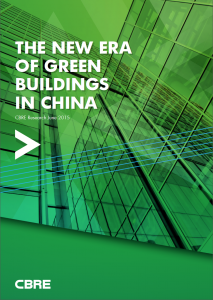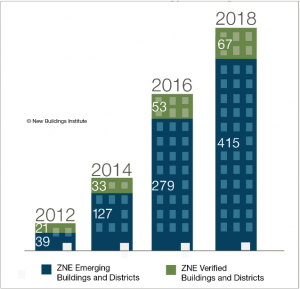In a post last week, IESE researcher Ana Isabel Dutch made reference to the the dizzying pace of urbanization across the developing world and pointed out that we will double the number of buildings by 2050.
Last year I saw this phenomena first hand in China where I was lecturing on Global Strategy to IESE’s Global Executive MBA program. We had arranged to take the class to visit one of China’s very succesful property developers and were met there by the company’s Director of Strategy who had been educated in the U.S. and had worked for one of the large consultancy firms.
The way he explained the situation to the group was very simple. Chinese people continued to move into the cities and he cited statistics showing how urbanization had reached 56.8% according to the world bank by 2016. The thing is that it was about 55.6 % in 2015 and was going up about 1.2 percentage points every year. With 1.3 billion Chinese, that means that 15.6 million people need a new place to live every year! Assuming 3-5 people in each unit, this gives an idea of how many housing units need to be built each year in China.
 From an environmental viewpoint, the vast majority of these buildings are being put up with conventional technology and designs which spell trouble for the world as much of the urbanization that is playing out today will follow the Chinese pattern. The good news is that China has started to build more ecological buildings and has its own China Green Standard certification process which is similar to the US’s Leadership in Energy and Environmental Design (LEED) system. According to CBRE’s research arm, China is starting to embrace the standards.
From an environmental viewpoint, the vast majority of these buildings are being put up with conventional technology and designs which spell trouble for the world as much of the urbanization that is playing out today will follow the Chinese pattern. The good news is that China has started to build more ecological buildings and has its own China Green Standard certification process which is similar to the US’s Leadership in Energy and Environmental Design (LEED) system. According to CBRE’s research arm, China is starting to embrace the standards.
The thing is that green buildings do cost between 1-6% more than conventional buildings in China according to the CRBE report and since the issue is to accommodate millions of people moving into the cities each year, then it is critical that government and civil society take steps to assure that urbanization makes things better not worse in environmental terms.
The United States is an example of both what to avoid as well as what to do about the problem.
According to the Rocky Mountain Institute, buildings account for 39% of the carbon emissions of the United States and use 60& of the country’s electricity. Making buildings more efficient is one of the most straight forward ways of improving the carbon footprint as most of the buildings in the country were built when the level of environmental sensibility was much lower than today or even non existent.
One approach is to conduct deep retrofits like the kind that the Institute got involved concerning the Empire State Building about ten years ago. Tony Malkin, Chairmen of the Empire State Trust makes a very compelling case for deep retrofits in the video below and moire details on the project can be found here.
 Beyond retrofits, the next step is to create buildings which are a net zero, that is they do not consume energy on an annual basis. Such buildings will typically be connected to the gris and generate their own power such that at any given moment they might be taking energy in or out but the essential idea is that their contribution is at least neutral.
Beyond retrofits, the next step is to create buildings which are a net zero, that is they do not consume energy on an annual basis. Such buildings will typically be connected to the gris and generate their own power such that at any given moment they might be taking energy in or out but the essential idea is that their contribution is at least neutral.
One of the leaders in this field is Portland Oregon’s New Building Institute (NBI) which has been promoting this concept since 2008. The NBI has certified 67 such buildings and offers a webinar on the topic that can be found here. Buildings are classified as emerging until they can prove their annual energy performance.
The most exciting thing about the building space is that it is enormous, important, and mostly has to do with commercially available technologies. It is also both global and local at the same time and in my view offers tremendous potential to investors, entrepreneurs and people looking for a meaningful career!

